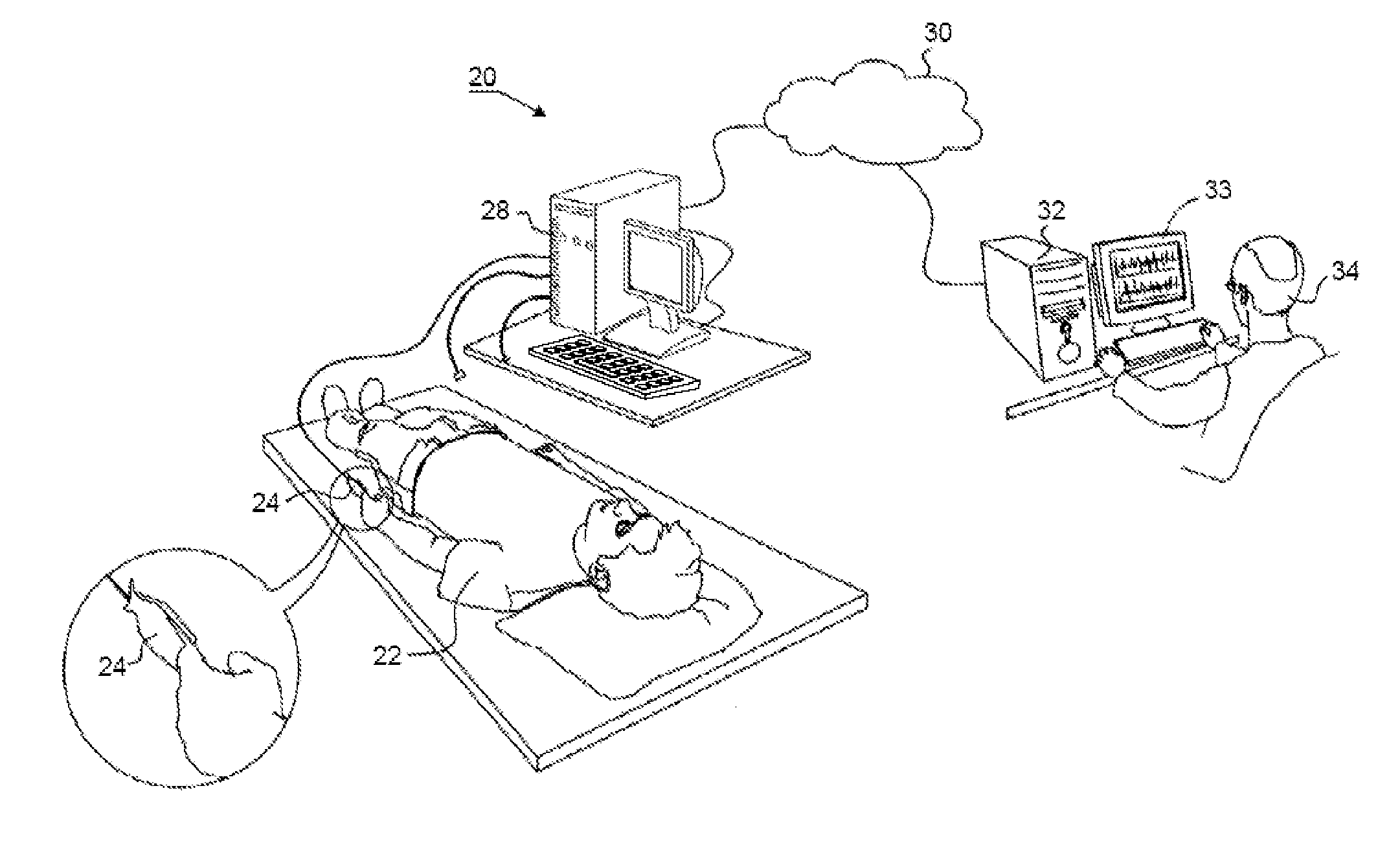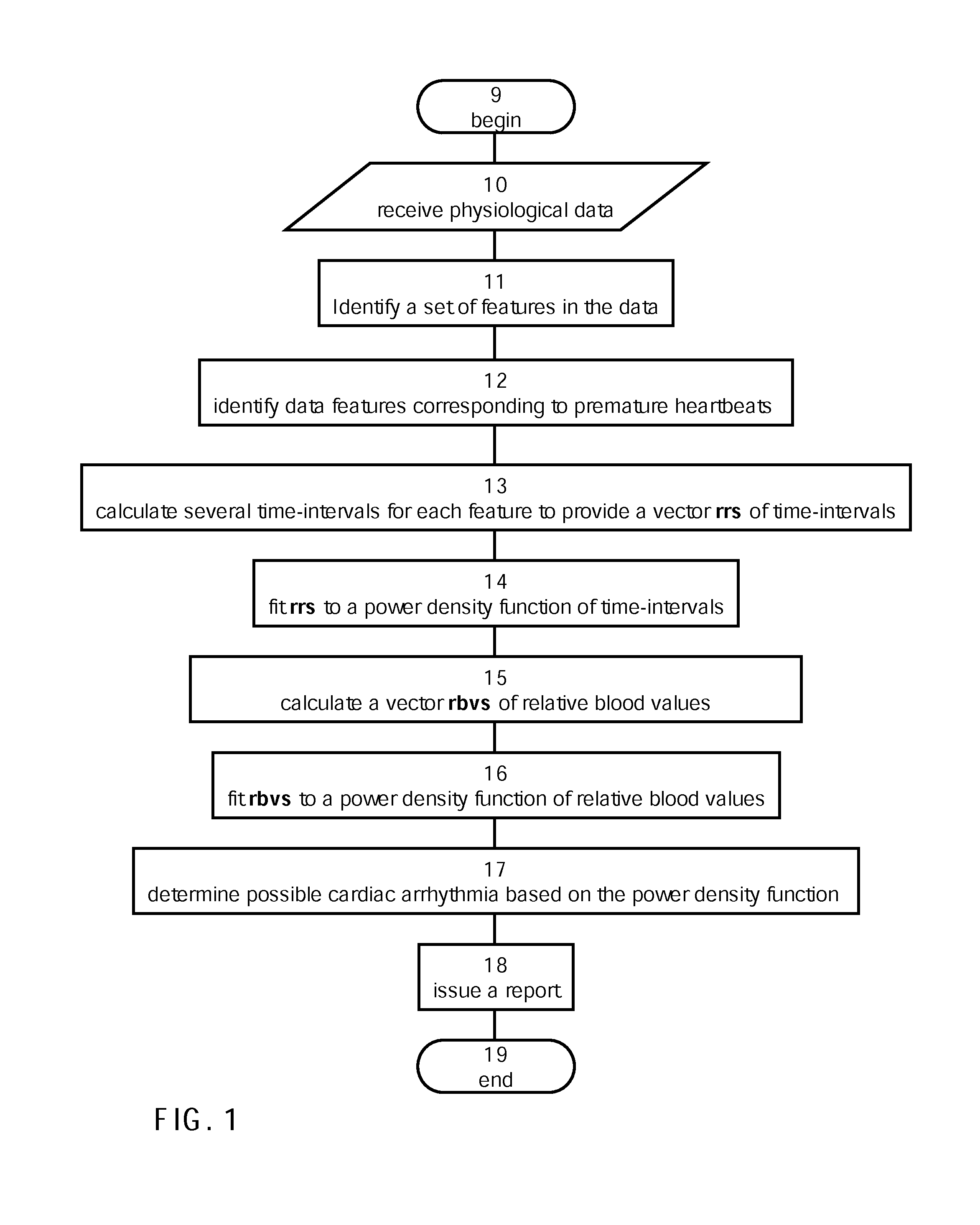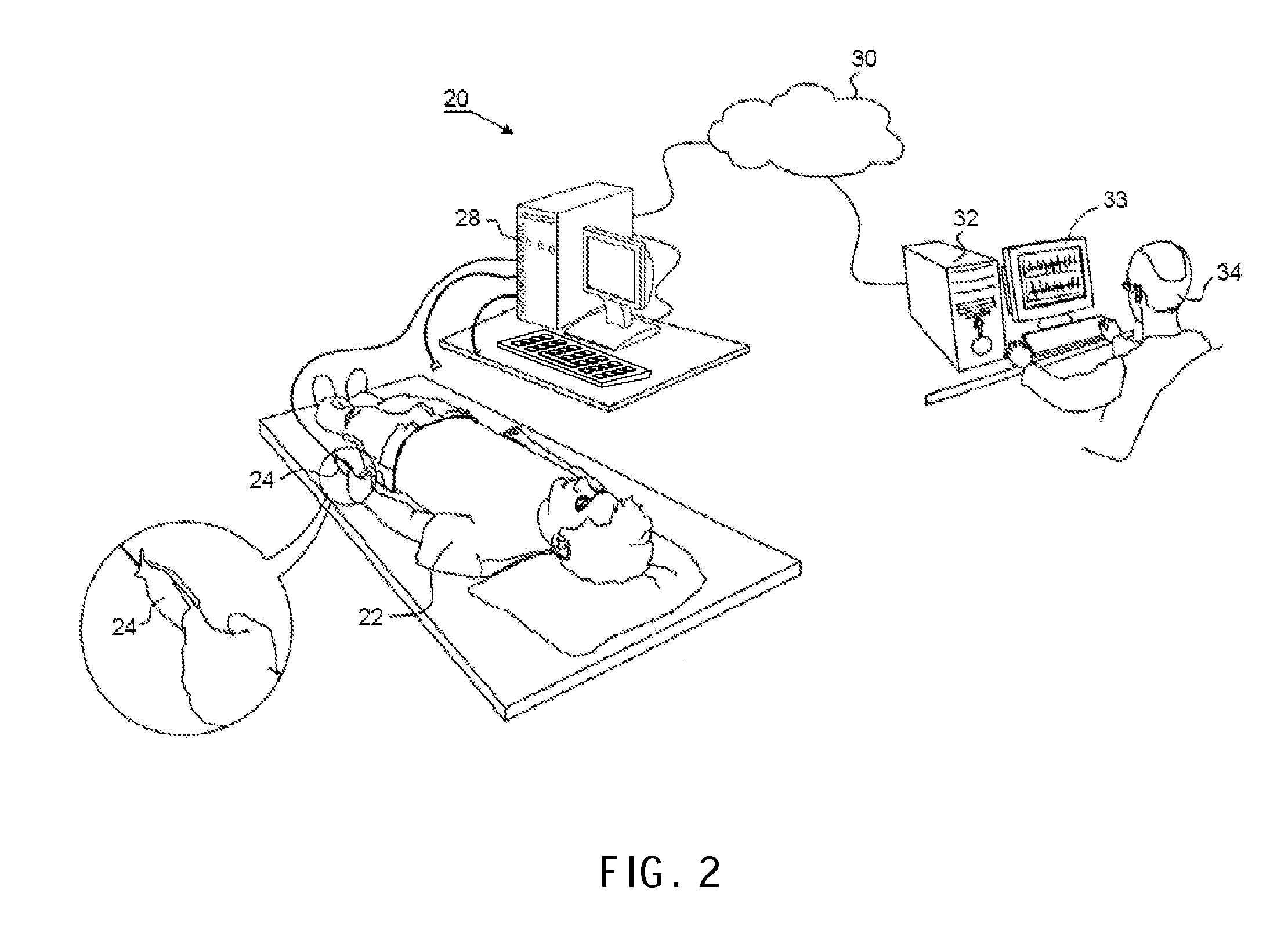Method and system for detecting cardiac arrhythmia
a cardiac arrhythmia and detection method technology, applied in the field of physiological monitoring and diagnosis, can solve the problems of erroneous back-up beat, high chaotic sequence of heartbeats, and typically too small repolarization signal to be seen
- Summary
- Abstract
- Description
- Claims
- Application Information
AI Technical Summary
Problems solved by technology
Method used
Image
Examples
example 1
[0131]Embodiments of the present embodiments have been utilized to detect arrhythmias from ECG and PPG data
[0132]64 eligible patients were recruited from the Heart Failure Center at Lady Davis Carmel Medical Center / Lin Medical Center in Haifa, Israel. Patients were followed and treated for symptomatic HF of at least 1 month's duration. Treatment was according to AHA / ACC guidelines. Only patients willing to sign an informed consent were enrolled in the study. The study was approved by the medical center's Helsinki Committee. Included were 64 HF patients (54 men and 10 women; age range 27-88 years). The patient underwent full-night PSG sleep test, which include 12 leads ECG and PPG channel on top of the standard channels of PSG test i.e. EEG, chin EMG, EOG, LEG, oximetry, respiratory effort and respiratory flow.
[0133]Additional ECG data were obtained from Moody et al. supra and Goldberger et al. “PhysioBank, PhysioToolkit and PhsioNet: Components of a new Research Resource for Complex...
example 2
[0149]Embodiments of the present embodiments have been utilized to detect premature heartbeats. ECG and PPG data were obtained, preprocessed and the ventricular depolarization were identified as described in Example 1 above.
[0150]The series RT[n] and RV[n] were calculated from rr1[n] and rbv1[n] as described above.
[0151]FIGS. 8A-B shows a representative example of a premature ventricular contraction beat as it is manifested on the ECG (FIG. 8A) and the PPG (FIG. 8B). As shown in both figures, the QRS of the premature ventricular contraction is wide and has no existing P wave. Additionally, the premature ventricular contraction has prolonged compensatory pause before the next heartbeat appears. As shown in FIG. 8B, the relative blood volume value of the premature ventricular contraction is 0.1, the relative blood volume of a normal beat (e.g., a beat preceding the premature ventricular contraction) is 1, and the relative blood volume of the beat immediately following the compensatory...
PUM
 Login to View More
Login to View More Abstract
Description
Claims
Application Information
 Login to View More
Login to View More - R&D
- Intellectual Property
- Life Sciences
- Materials
- Tech Scout
- Unparalleled Data Quality
- Higher Quality Content
- 60% Fewer Hallucinations
Browse by: Latest US Patents, China's latest patents, Technical Efficacy Thesaurus, Application Domain, Technology Topic, Popular Technical Reports.
© 2025 PatSnap. All rights reserved.Legal|Privacy policy|Modern Slavery Act Transparency Statement|Sitemap|About US| Contact US: help@patsnap.com



